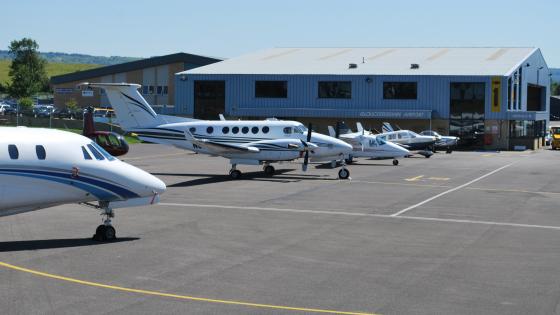Jason Ivey joined Gloucestershire Airport in 2023 as airport director. Having begun his career in aviation as an 18-year-old in the Royal Air Force, Ivey has been tasked with building on the airport’s role as a gateway for regional growth in the UK.
What is the biggest issue facing airports today?
Airports need to adapt to minimise environmental impacts and meet net zero targets. There are many sustainable technologies being developed to assist with this, from drone delivery services and electric air taxis to sustainable aviation fuels (SAFS) such as hydrogen. Making the choice of which technology to invest in is a challenge as it’s difficult to know what will gain momentum and how easily they can be integrated into airport operations.
How can the issue be tackled?
We need to encourage collaboration across research and development. The regular sharing of expertise and experience between businesses, airports, airlines and research institutions would foster innovation, helping to accelerate the adoption of sustainable technologies. More engagement with the public would aid the sector’s understanding of the demand for sustainable travel – for example, by testing if emerging technologies such as electric air taxis and other urban air mobility concepts could gain public support and use over time.

The airport is within easy reach of the UK's Midlands and South West regions
What has the airports sector learned from the pandemic and ensuing recovery period?
Diversification is key. During the pandemic, regional business airports often fared better than those offering regular scheduled services as they provided a varied mix of options for travel. However the market is still uncertain and we need to continue looking at new ways to diversify to ensure airports are resilient in the face of change.
What single thing do you most want to see happen in the airport sector?
I’d like to see business aviation regulated and marketed differently. Currently, business aviation is regulated in a similar way to large commercial airports, although how they operate and what they offer can be vastly different. Tied to this, regional business airports need to be marketed as being more than just for short local journeys carried out by private jets and general aviation aircraft. We need to instil them as being hubs for regional connectivity, new technology and training for people wishing to start a career in aviation.
What key technology will have the biggest impact on the sector?
Sustainable aviation fuels could make a big impact in reducing the aviation industry’s carbon footprint. The adoption and increased use of SAFs is crucial to the industry's efforts to reduce its environmental impact. Hydrogen in particular could have a big impact, with further research, development and investment needed for its widespread adoption. What major regional airport developments can we expect to see next? We can expect to see regional business airports supporting connectivity by becoming hubs for regional growth. This will be done by expanding services, adding new routes with increased frequencies and facilitating better connections for underserved regions. With this I’d hope to see regional airports supporting infrastructure improvements and business partnerships.
